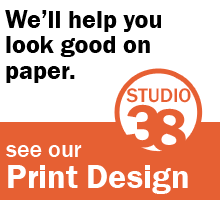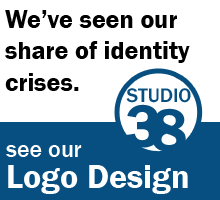Before
After
In the newspaper industry, one effort commonly employed to draw new readership in is to publish what is called a TMC, or Total Market Coverage supplement. It is a condensed version of the full-sized paper, with smaller articles of local news, usually only a few pages long. Copies are distributed free of charge to households of non-subscribers. It also, of course, serves as an advertising vehicle.
The Press-Republican's TMC publication, Press Republican Extra (called simply the "Press Extra" in-house), goes out to approximately 20,000 homes in our coverage area every Wednesday. The decision was recently made (more or less, I'm a few months tardy in posting this) to redesign the flag from its previous incarnation. The objective was to condense the current version so that an additional a low-cost, full-color advertising opportunity could be presented in the form of a triangular "dog ear" ad in the right-hand corner of the front page.
The project had a short turnaround time, so I acted quickly in assessing what needed to be lost or kept and began slashing away; the tagline was the first thing to go, and Cooper was replaced by a bold version of the much cleaner Bodoni. For the bottom field, a slightly lighter shade of the blue from our online identity was used. The result is a visually concise, distinguished logo.
The Press-Republican's TMC publication, Press Republican Extra (called simply the "Press Extra" in-house), goes out to approximately 20,000 homes in our coverage area every Wednesday. The decision was recently made (more or less, I'm a few months tardy in posting this) to redesign the flag from its previous incarnation. The objective was to condense the current version so that an additional a low-cost, full-color advertising opportunity could be presented in the form of a triangular "dog ear" ad in the right-hand corner of the front page.
The project had a short turnaround time, so I acted quickly in assessing what needed to be lost or kept and began slashing away; the tagline was the first thing to go, and Cooper was replaced by a bold version of the much cleaner Bodoni. For the bottom field, a slightly lighter shade of the blue from our online identity was used. The result is a visually concise, distinguished logo.











